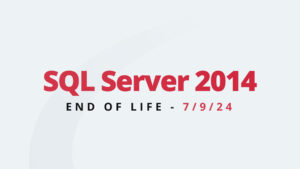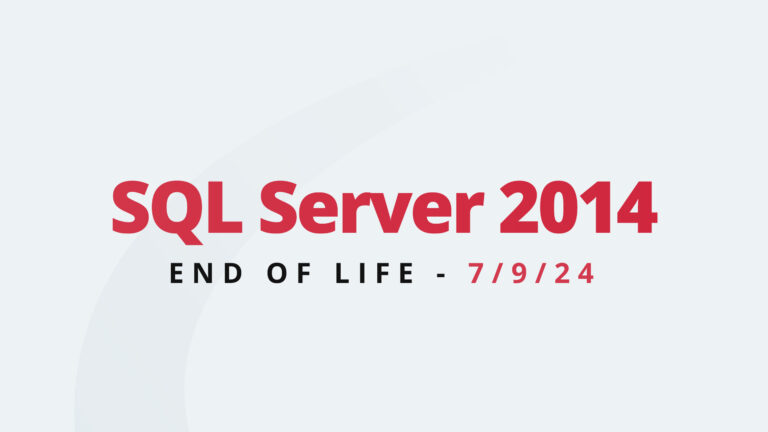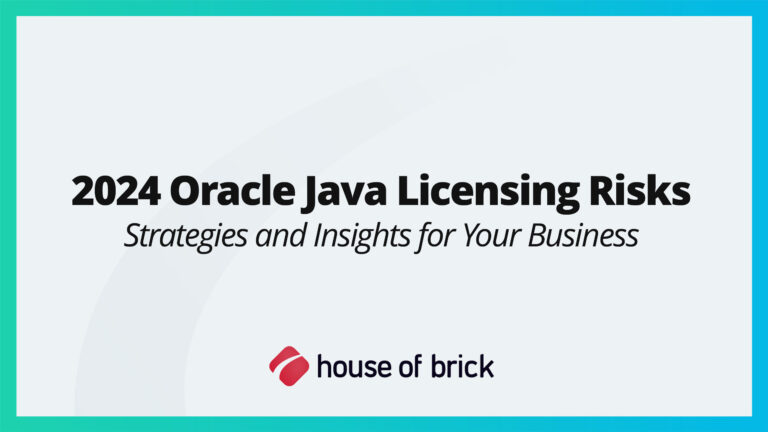Pam Fulmer, Partner, Fulmer Ware LLP
This is a guest blog post written by Pam Fulmer, a partner at Fulmer Ware LLP based in San Francisco. House of Brick has partnered with Pam and her firm many times in helping customers with the sometimes difficult task of defending themselves in audit and/or license negotiation situations with Oracle. This blog originally appeared at http://www.fulmerware.com/blog.
From public documents, we know that the standard Oracle License and Services Agreement (“OLSA”) and the newer Oracle Master Agreement (“OMA”) typically provide Oracle with the right to audit the use of Oracle software by its customers, provided that the audit does not unreasonably interfere with the customer’s normal business operations. The contract allows Oracle to, in effect, take a snapshot of a customer’s Oracle software usage at a certain point in time, but it does not allow Oracle to go rummaging around and looking through other customer systems and data, which have no relation to Oracle software. Under the OLSA, customers pay Oracle a licensing fee only on those processors where Oracle software is used; i.e. where it is “installed” or is “running”. Although the OLSA does not entitle Oracle to audit servers not running Oracle, in the last few years Oracle has sought to stretch the “installed and/or running” language of the processor definition when a customer is running a software product by VMware, which allows customers to run multiple “virtual servers” on one physical server. Oracle claims that all servers running the VMware software require an Oracle license even when there is no Oracle software installed on them.
For example, in Fall 2015, Oracle threatened to terminate a license agreement that it had with global confectioner, Mars Corporation. Mars and Oracle battled it out for months via email during the audit over the meaning of the “installed and/or running” language of the processor definition, until Oracle finally pulled out the big guns and threatened to terminate the license. Mars responded by filing a lawsuit for injunctive and declaratory relief in San Francisco County Superior Court. The case did not last long, but it resulted in a treasure trove of Oracle-related documents coming into the public domain.
In correspondence, Oracle took the position that Mars needed to purchase licenses for all servers running VMware, even where the Oracle software was not “installed” or “running”. A letter from Chad Russell, Senior Counsel in Oracle’s Legal Department, is instructive. According to Mr. Russell, “Oracle programs are installed on any processors where the programs are available for use. Third party VMware technology specifically is designed for the purpose of allowing live migration of programs to all processors across the entire environment. Thus, Oracle Enterprise Edition is installed and available for use on all processors in a V-Center.” Exhibit 11 to Declaration of Eloise Backer, Mars v. Oracle, San Francisco Superior Court, Case No. CGC-15 -548606. Essentially, Oracle took the position that the mere fact that Oracle software might possibly be installed and run on one of these processors at some indeterminate time in the future, constituted a use of Oracle software and a licensing event for which Mars would need to pay a royalty at the time of the audit. Would a California court construe the mere possibility of a future event that may never occur as an actual “use” of Oracle software so as to trigger a royalty obligation? We think it highly unlikely. Moreover, Oracle may think it highly unlikely as well, which is why, to our knowledge, Oracle has never filed a lawsuit against any customer based upon its expansive interpretation of the “installed and/or running” language.
Based on the public correspondence filed in the Mars case, it appears that Oracle was unable to point to any actual contractual support in the OLSA for its novel definition of “installed” or what it means to “use” Oracle software. And, after defending multiple software audits on behalf of Oracle customers, we too are unaware of any language in the OLSA, which would support Oracle’s position. In fact, just the opposite is true. The fully integrated agreement does not contain contractual language or incorporate other documents or URLs, related to use of a product like VMware, upon which to base such an assertion. Further, to the extent Oracle is using its limited audit rights to gain access to confidential customer information about servers where no Oracle software is installed and/or running, a California court could find that such actions constitute a breach of the audit clause, as well as an unfair trade practice under California law. This is especially true if Oracle attempts to use the improperly obtained information to threaten license termination in order to pressure its customers to buy cloud credits or other Oracle software. And to the extent that Oracle succeeds in using its expansive interpretation of the “installed and/or running” language to move its customers out of VMware, Oracle customers may have a claim against Oracle for intentional interference with contract and other related torts.
California Civil Code Section 1638 provides that “the language of a contract is to govern its interpretation, if the language is clear and explicit, and does not involve an absurdity.” See also People ex rel. Lockyer v. R.J. Reynolds Tobacco Co. (2003) 107 Cal. App. 4th 516, 525. Oracle’s interpretation of the “installed and/or running” language cannot be deemed either clear or explicit and, in fact, is absurd. Indeed, just reading Mr. Russell’s lengthy and labored three sentence explanation of what it means to be “installed” shows the fatal flaw with this argument. Oracle, as the drafter of the OLSA, had the opportunity and burden to specifically define “installed” if it wanted to interpret it in this manner and not in its usual sense as “installed” is used in the software industry. It did not do so. Under California Civil Code Section 1644, “[t]he words of a contract are to be understood in their ordinary and popular sense, rather than according to their strict legal meaning; unless used by the parties in a technical sense, or unless a special meaning is given to them by usage, in which case the latter must be followed.” Id. at 525-26.
Even if a court were to find the language ambiguous, California law requires that ambiguities be interpreted against the drafter of the contract, which is Oracle. See Cal. Civ. Code §1654 (contract should be interpreted most strongly against the drafting party); see also San Pasqual Band of Mission Indians v. State of Cal. (2015) 241 Cal. App. 4th 746, 761-62 (“In cases of uncertainty . . . the language of a contract should be interpreted most strongly against the party who caused the uncertainty to exist.” ). Finally, Oracle’s position that its programs are installed on any processors where the programs are available for use, if accepted, would lead to an absurd result, as it would require Oracle customers to pay a license fee for a speculative future event that may never happen. The license grant covers a customer’s actual use of the software, and not a potential use in the future.
Under California Civil Code Section 1636, “a contract must be so interpreted as to give effect to the mutual intention of the parties as it existed at the time of contracting;” see also DVD Copy Control Ass’n, Inc. v. Kaleidescape, Inc. (2009) 176 Cal. App. 4th 697, 712 (“interpretation of the License Agreement is guided by the principle that it “must be so interpreted as to give effect to the mutual intention of the parties as it existed at the time of contracting, so far as the same is ascertainable and lawful.”). Indeed, most likely Mars (and we suspect other Oracle customers) would have never entered into the license agreement, if it had known of Oracle’s overbroad interpretation of “installed” and what Oracle contends it means in the context of VMware virtualization. Although Oracle’s “installed and/or running” language has been in place since the early 2000s, in 2009 when Mars and Oracle entered into their licensing agreement, the present VMware virtualization technology was not in widespread use by customers with their Oracle database, meaning Oracle’s novel interpretation of “installed” could not possibly have been mutually intended by the parties.
If your company has been notified of an Oracle audit, or you are under audit now, do not delay before seeking experienced legal counsel to assist you. Likewise if you have been audited by Oracle and have purchased additional software or paid money based upon Oracle’s assertions around VMware, you may have legal options to recoup some of those costs. In any event, do not go up against Oracle without knowing your legal rights. What you do not know, could and will most assuredly, hurt you.







